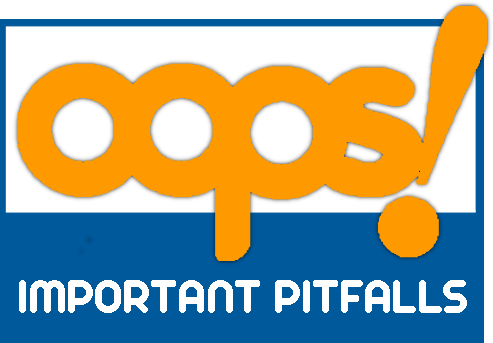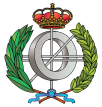Evaluation results
There are three levels of importance in pitfalls according to
their impact on the ontology:
- Critical It is crucial to correct the pitfall. Otherwise, it could affect the ontology consistency, reasoning, applicability, etc.
- Important Though not critical for ontology function, it is important to correct this type of pitfall.
- Minor It is not really a problem, but by correcting it we will make the ontology nicer.
Pitfalls detected:
This pitfall appears when any relationship (except for those that are defined as symmetric properties using owl:SymmetricProperty) does not have an inverse relationship (owl:inverseOf) defined within the ontology.
• OOPS! has the following suggestions for the relationships without inverse:
› https://w3id.org/ontouml#property could be inverse of https://w3id.org/ontouml#propertyType
› https://w3id.org/ontouml#subsetsProperty could be inverse of https://w3id.org/ontouml#redefinesProperty
• Sorry, OOPS! has no suggestions for the following relationships without inverse:
› https://w3id.org/ontouml#restrictedTo
› https://w3id.org/ontouml#containsView
› https://w3id.org/ontouml#attribute
› https://w3id.org/ontouml#model
› https://w3id.org/ontouml#general
› https://w3id.org/ontouml#shape
› https://w3id.org/ontouml#topLeftPosition
› https://w3id.org/ontouml#sourceView
› https://w3id.org/ontouml#targetEnd
› https://w3id.org/ontouml#literal
› https://w3id.org/ontouml#owner
› https://w3id.org/ontouml#point
› https://w3id.org/ontouml#generalization
› https://w3id.org/ontouml#isViewOf
› https://w3id.org/ontouml#specific
› https://w3id.org/ontouml#relationEnd
› https://w3id.org/ontouml#sourceEnd
› https://w3id.org/ontouml#diagram
› https://w3id.org/ontouml#project
› https://w3id.org/ontouml#cardinality
› https://w3id.org/ontouml#aggregationKind
› https://w3id.org/ontouml#categorizer
› https://w3id.org/ontouml#stereotype
› https://w3id.org/ontouml#containsModelElement
› https://w3id.org/ontouml#targetView
• OOPS! has the following suggestions for the relationships without inverse:
› https://w3id.org/ontouml#property could be inverse of https://w3id.org/ontouml#propertyType
› https://w3id.org/ontouml#subsetsProperty could be inverse of https://w3id.org/ontouml#redefinesProperty
• Sorry, OOPS! has no suggestions for the following relationships without inverse:
› https://w3id.org/ontouml#restrictedTo
› https://w3id.org/ontouml#containsView
› https://w3id.org/ontouml#attribute
› https://w3id.org/ontouml#model
› https://w3id.org/ontouml#general
› https://w3id.org/ontouml#shape
› https://w3id.org/ontouml#topLeftPosition
› https://w3id.org/ontouml#sourceView
› https://w3id.org/ontouml#targetEnd
› https://w3id.org/ontouml#literal
› https://w3id.org/ontouml#owner
› https://w3id.org/ontouml#point
› https://w3id.org/ontouml#generalization
› https://w3id.org/ontouml#isViewOf
› https://w3id.org/ontouml#specific
› https://w3id.org/ontouml#relationEnd
› https://w3id.org/ontouml#sourceEnd
› https://w3id.org/ontouml#diagram
› https://w3id.org/ontouml#project
› https://w3id.org/ontouml#cardinality
› https://w3id.org/ontouml#aggregationKind
› https://w3id.org/ontouml#categorizer
› https://w3id.org/ontouml#stereotype
› https://w3id.org/ontouml#containsModelElement
› https://w3id.org/ontouml#targetView
An ontology element is used as a class without having been explicitly declared as such using the primitives owl:Class or rdfs:Class. This pitfall is related with the common problems listed in [8].
• This pitfall appears in the following elements:
› http://xmlns.com/foaf/0.1/Organization
› http://purl.org/dc/terms/Standard
• This pitfall appears in the following elements:
› http://xmlns.com/foaf/0.1/Organization
› http://purl.org/dc/terms/Standard
This pitfall consists in not declaring the owl:Ontology tag, which provides the ontology metadata. The owl:Ontology tag aims at gathering metadata about a given ontology such as version information, license, provenance, creation date, and so on. It is also used to declare the inclusion of other ontologies.
*This pitfall applies to the ontology in general instead of specific elements.
*This pitfall applies to the ontology in general instead of specific elements.
Suggestions or warnings:
The domain and range axioms are equal for each of the following object properties. Could they be symmetric or transitive?
› | https://w3id.org/ontouml#subsetsProperty
› | https://w3id.org/ontouml#redefinesProperty
› | https://w3id.org/ontouml#subsetsProperty
› | https://w3id.org/ontouml#redefinesProperty
According to the highest importance level of pitfall found in your ontology the conformace bagde suggested is "Important pitfalls" (see below). You can use the following HTML code to insert the badge within your ontology documentation:
References
Lexicalizing Ontologies: The issues behind the labels. In Multimodal communication in the 21st century: Professional and academic challenges. 33rd Conference of the Spanish Association of Applied Linguistics (AESLA), XXXIII AESLA.
Ontology development 101: A guide to creating your first ontology.
Evaluation of Taxonomic Knowledge in Ontologies and Knowledge Bases. Proceedings of the Banff Knowledge Acquisition for Knowledge-Based Systems Workshop. Alberta, Canada.
Style guidelines for naming and labeling ontologies in the multilingual web.
Ontology Evaluation. PhD thesis.
Ontology evaluation. In Handbook on ontologies, pages 251-273. Springer.
Owl pizzas: Practical experience of teaching owl-dl: Common errors & common patterns. In Engineering Knowledge in the Age of the Semantic Web, pages 63-81. Springer.
Weaving the pedantic web. In Proceedings of the WWW2010 Workshop on Linked Data on the Web, LDOW 2010, Raleigh, USA, April 27, 2010.
D7. 1.3-study on persistent URIs, with identification of best practices and recommendations on the topic for the Mss and the EC. PwC EU Services.
“Linked Data - Design issues”. http://www.w3.org/DesignIssues/LinkedData.html
Linked Data: Evolving the Web into a Global Data Space. Morgan & Claypool, 1st edition.
Is your linked data vocabulary 5-star?. http://bvatant.blogspot.fr/2012/02/is-your-linked-data-vocabulary-5-star_9588.html
Enter your ontology to scan:




